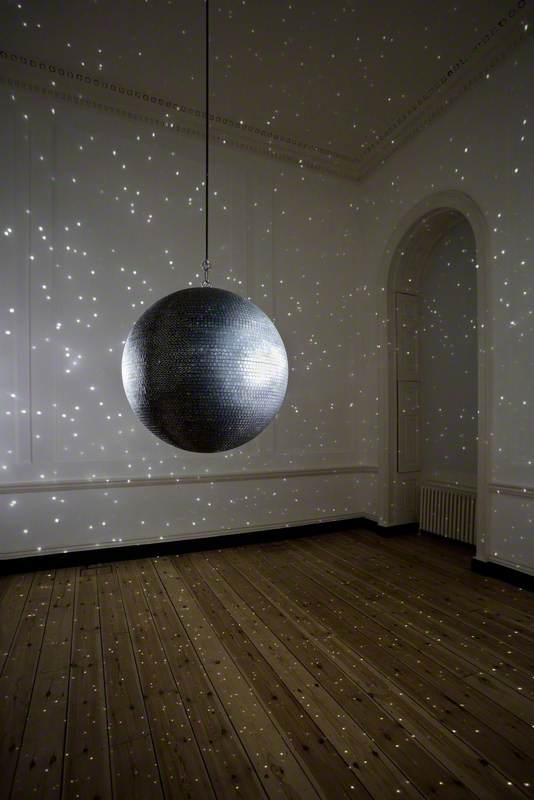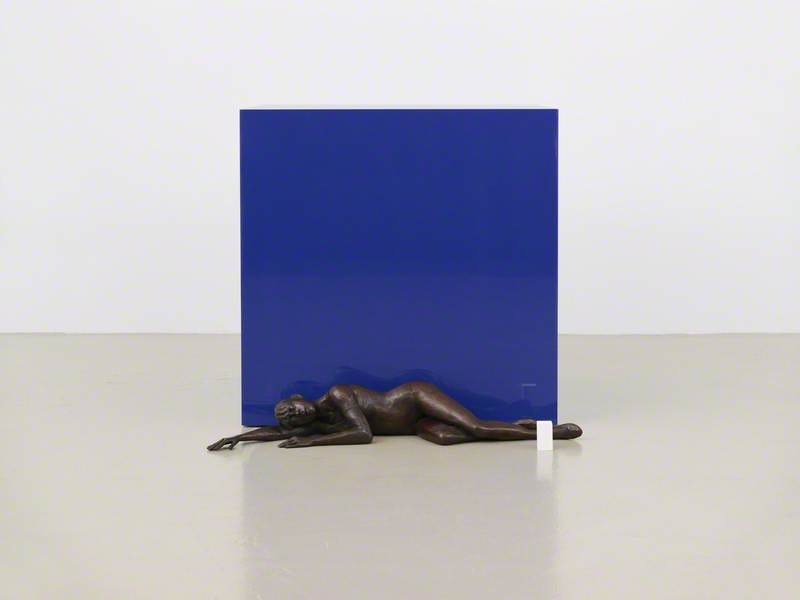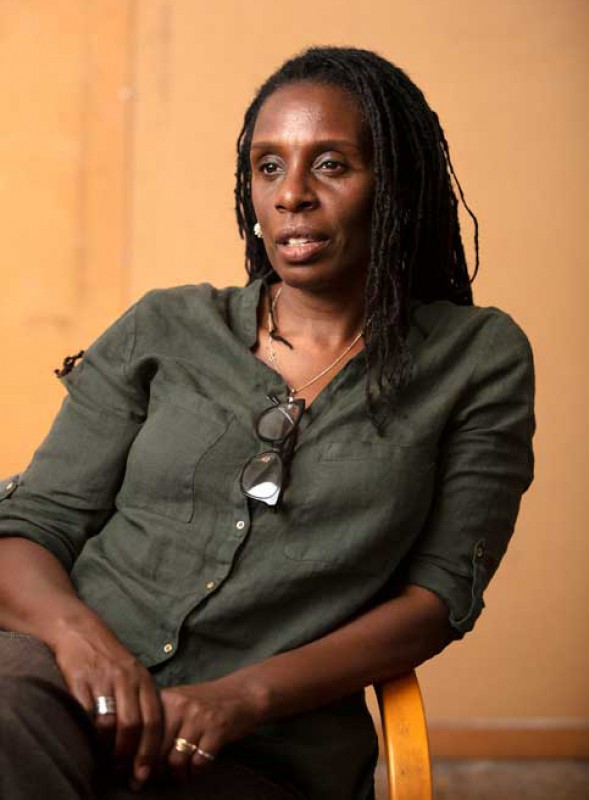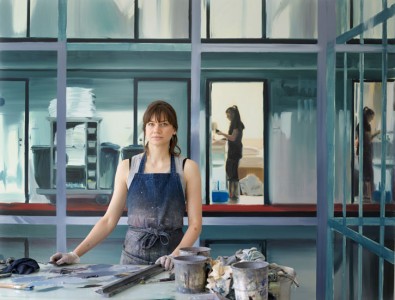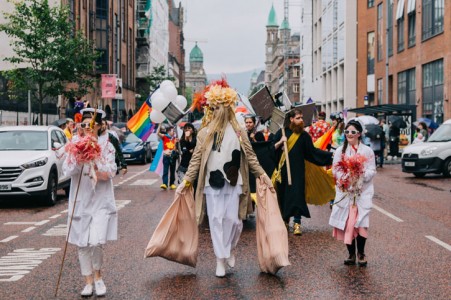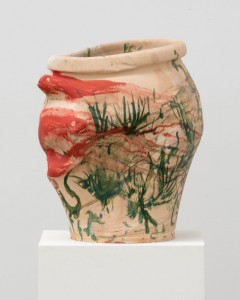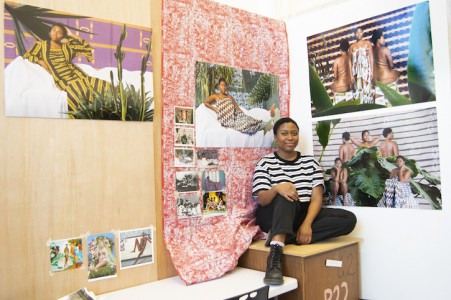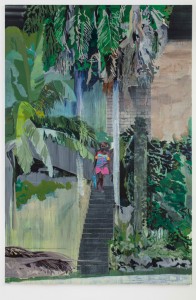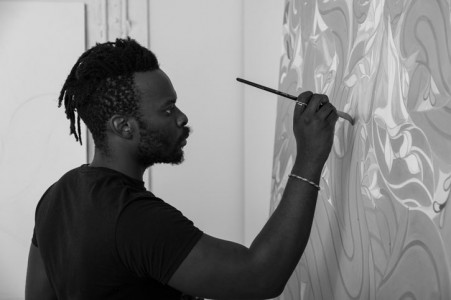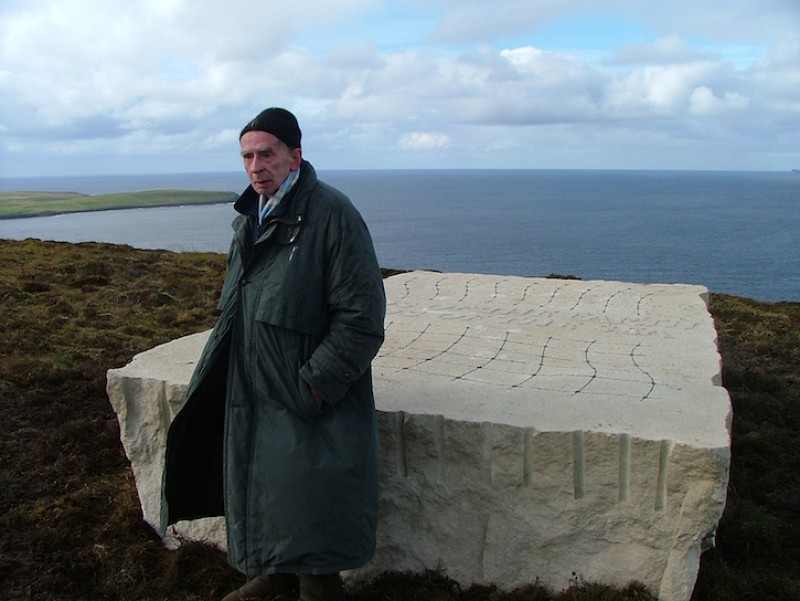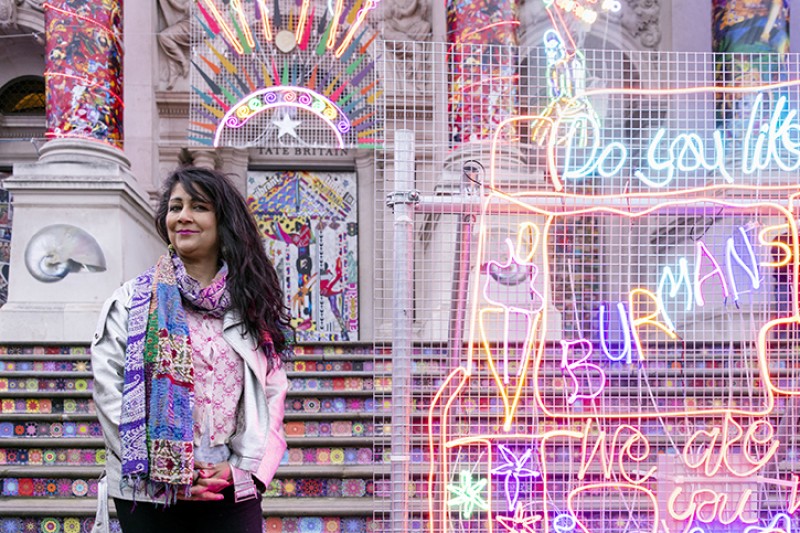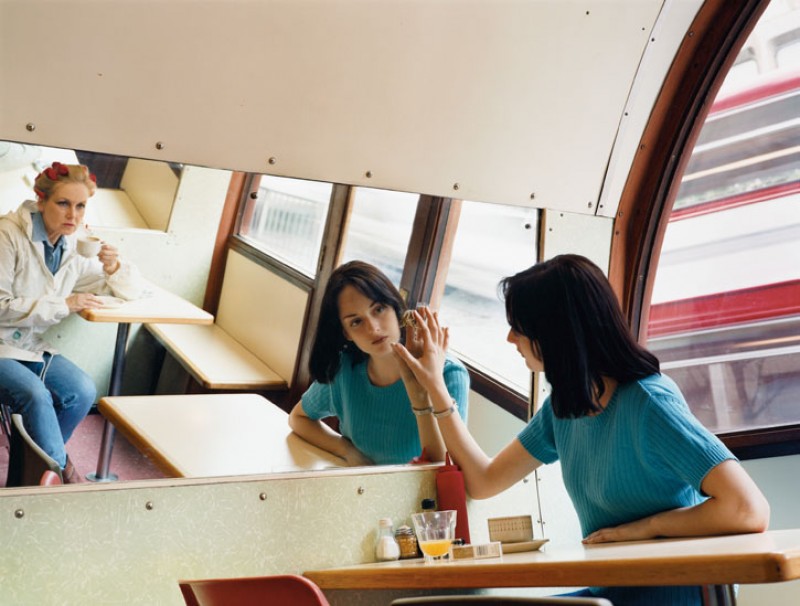In the series 'Seven questions with...' Art UK speaks to some of the most exciting emerging and established artists working today.
From live-broadcasting the sound of a melting glacier in Iceland to sending a meteorite back into space, Katie Paterson's astonishing body of work includes a vast collection of projects that consider humanity in the context of geological time and change.
Her most recent work, Requiem, tells the story of Earth in a single object. It comprises 364 hand-made glass vials containing the dust ground from objects dating from pre-solar times to the present day – from carbonaceous chondrite, the oldest of meteorites, to rubble from the ruins of war-torn Iraq and regurgitated plastic from the body of a baby albatross.
Katie Paterson with 'Requiem'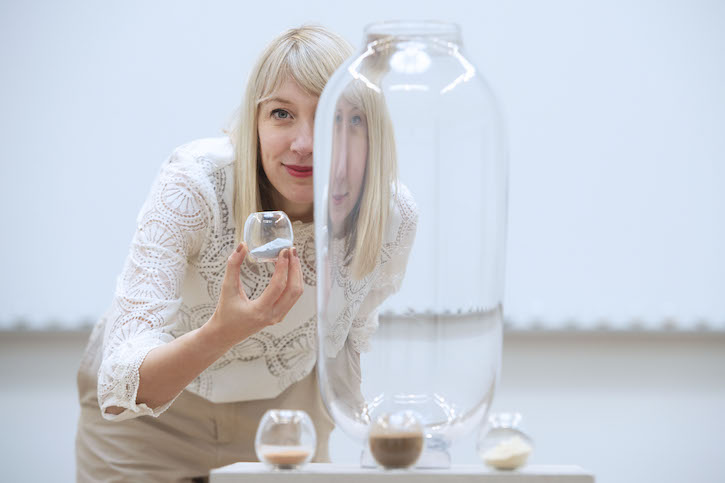
The dust contained within the vials is being poured, layer by layer, into a hand-made glass urn placed at the centre of the exhibition space at the Ingleby Gallery, Edinburgh, which will then travel to Durham Cathedral. Art UK spoke to Katie Paterson about the project – which has been jointly commissioned with the National Glass Centre in Sunderland – her practice, and some of her work in public collections.
Requiem
(detail), 2022, installation by Katie Paterson (b.1981) 
Rhona Taylor, Art UK: Firstly, could you tell me about your two-year role as artist-in-residence at Royal Museums Greenwich?
Katie Paterson: I had a studio inside the National Maritime Museum. Throughout the residency I was working on Requiem, and other works such as Evergreen and Future Library. It was an open residency, so it enabled me to work on my ongoing Ideas series and new projects – a lot of artworks were bubbling away and coming to fruition there.
I was able to draw on the knowledge of the people at the Royal Observatory – astronomers and the Curator of Time – and to have the quiet space and time to focus on writing and ideas.
Evergreen
(installation view), 2022, embroidery by Katie Paterson (b.1981) 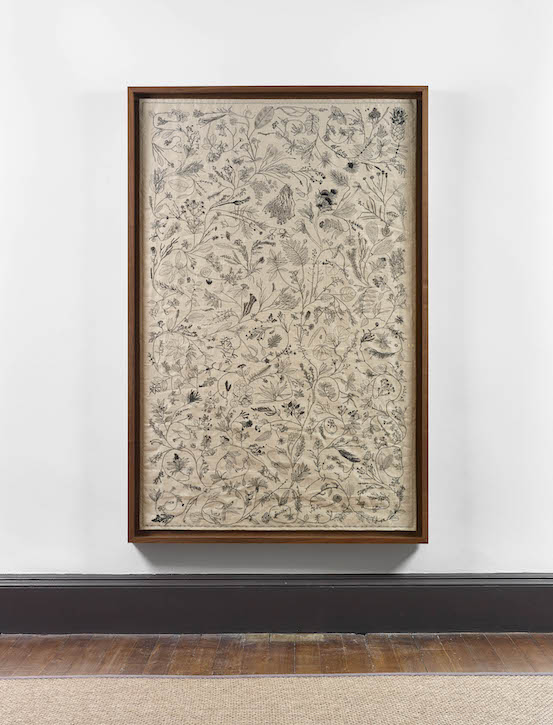
Evergreen brings together every known extinct plant on earth. I had been looking at a May Morris embroidery called Owl from the Arts and Crafts movement – I traced the outlines of the vines from Owl and replaced the flower heads and plants with the extinct plants of now.
I gathered hundreds of images and had them redrawn by botanical illustrator Deborah Lambkin. Then they were hand-stitched by the Royal School of Needlework, who estimate there are around a million stitches in there.
Evergreen
(installation view), 2022, diagram by Katie Paterson (b.1981) 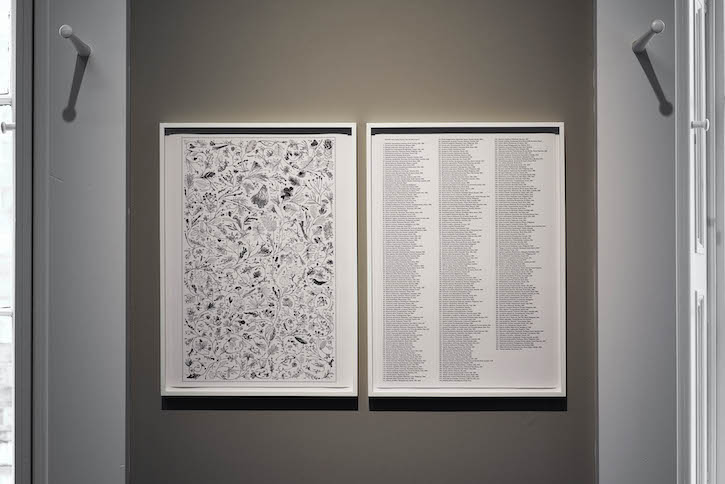
Rhona: You've said previously that the Requiem project came out of your Fossil Necklace project – a necklace comprising 170 fossils, each representing a major event in the evolution of life.
Katie: Yes, I'd say that was the most natural and obvious starting point. Requiem brings together threads from almost all my projects. It brings together the immensity of time and space, collapsing the infinitely small with the infinitely large.
It clearly arose when I was thinking about the offcuts of fossils that I had stored in my basement in Berlin – a condensed history of the Earth in fragments. I saw them turn to ruin and dust. The artwork became a funerary object that would contain a compendium of life. It would tell this story of deep time and situate us in this contemporary moment, where there's so much at stake.
Requiem
(installation view, detail), 2022 by Katie Paterson (b.1981) 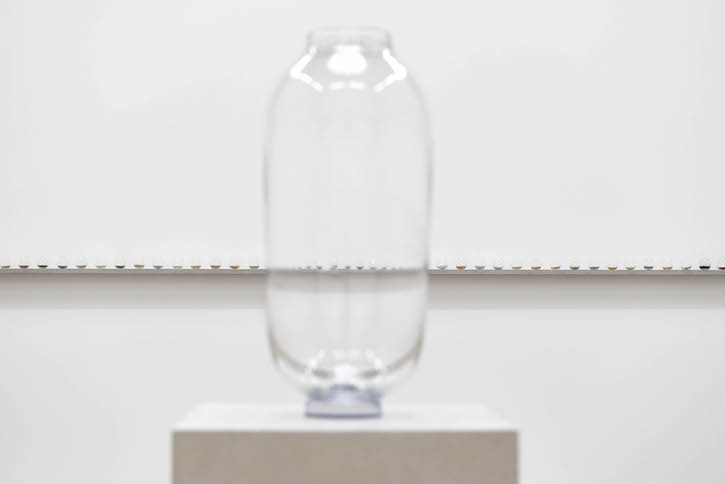
Rhona: The enormity of how you created Requiem is completely mind-blowing. How did you go about sourcing the materials you used?
Katie: It's been immense – it has taken years, and has been a collective undertaking. I wrote hundreds of letters, and bit by bit, with Jan Zalasiewicz, a renowned geologist who helped to guide the project, I sketched out a timeline.
The artwork is in no way a complete vision. It was my attempt to piece together a timeline of Earth that went back beyond the Earth. We received so many donations of extraordinary objects and materials from all over the world – from major institutions as well as geologists and researchers – and some I hand-collected. Some I acquired online and in auctions.
Katie Paterson in the studio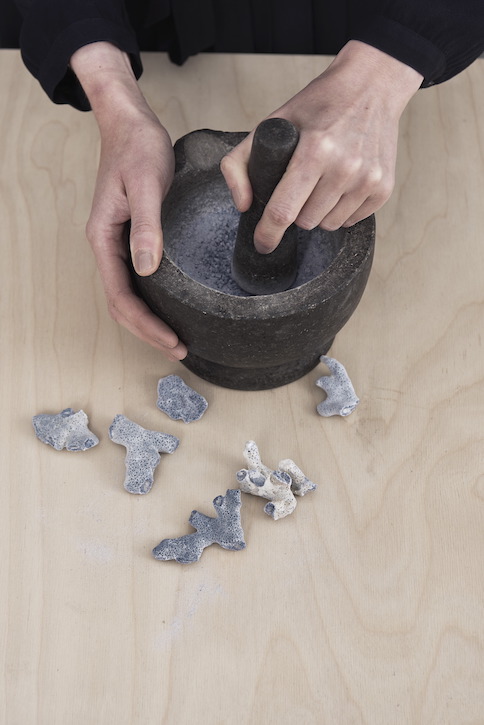
Rhona: Were there any of the objects that particularly resonated with you, or that you found particularly difficult?
Katie: All of the objects resonated. Most were difficult to crush, and evocative. Some felt really magical, like the first layer – crushed meteorites and asteroids that predate the sun, over five billion years old. As I moved towards the human-dominated era, it got harder – the artwork traced the extinctions that we have left in our wake.
All the objects were precious, and I treated them like that, so it was a struggle to crush them. I performed blessings. We're in a moment in time where we're witnessing a mass destruction of life and nature all around us. I was trying to make the preciousness more vivid.
By crushing all of these objects to dust and bringing them together in the same space, I wanted to try to collapse the five-billion-year distance and feel a more intimate connection to those things that otherwise appear so vast or unreachable, and draw attention to the plethora of life that has come before us living now, that has enabled us to live and breathe.
Rhona: Can you tell me about Hollow, your immersive outdoor artwork at the University of Bristol? There seem to be some parallels between that work and the Future Library project (a forest of trees being grown in Norway that will supply the paper for an anthology of books to be printed in 2114).
Katie: Future Library began in 2014. The most obvious connection with Hollow is trees – Hollow is made of over 10,000 tree species that cross space and time, and are brought together in an architectural space in Bristol designed with Zeller & Moye (Christoph Zeller and Ingrid Moye).
It's a permanent artwork that's very much connected to nature. The tree species span ancient fossils, from the first forests, to the oldest living trees, to the most threatened trees of this moment. The samples of wood are brought together in a quiet, immersive space, which is quite contemplative. Future Library is connected to literature, and thinking about words growing through trees and evolving through future generations.
Rhona: Another work on Art UK that is hard to comprehend in its enormity is Totality. How did you go about creating that?
Katie: For Totality we 3D-engineered a globe with 10,000 individually-printed mirror tiles inserted into it.
The images are of every solar eclipse that's been documented over time – some through drawing, some taken from modern telescopes, some are Twitter postings of solar eclipses.
It was a large photographic archive that we edited and printed onto mirror tiles. Totality is one enormous eclipse containing all eclipses. The light moves around the room in a galactic dance.
Katie Paterson
Rhona: You lived in London and then Berlin for a number of years before moving back to Scotland, to live in Fife. How has that change been for you?
Katie: It's a joy being back in Scotland – we're in a small village looking over the Firth of Forth. I travel a lot with my work, so I like coming back to the quiet.
Rhona Taylor, Commissioning Editor (Scotland) at Art UK
'Requiem' is at Ingleby Gallery to 11th June 2022 and then travels to the Chapter House of Durham Cathedral, a tour instigated by the National Glass Centre, Sunderland.

